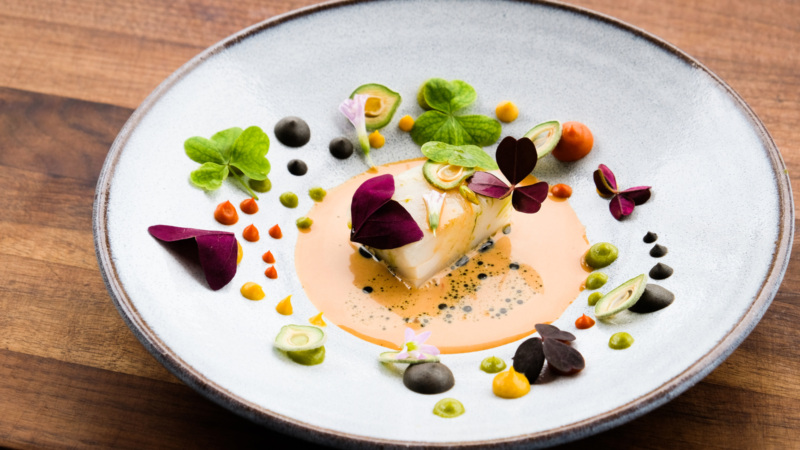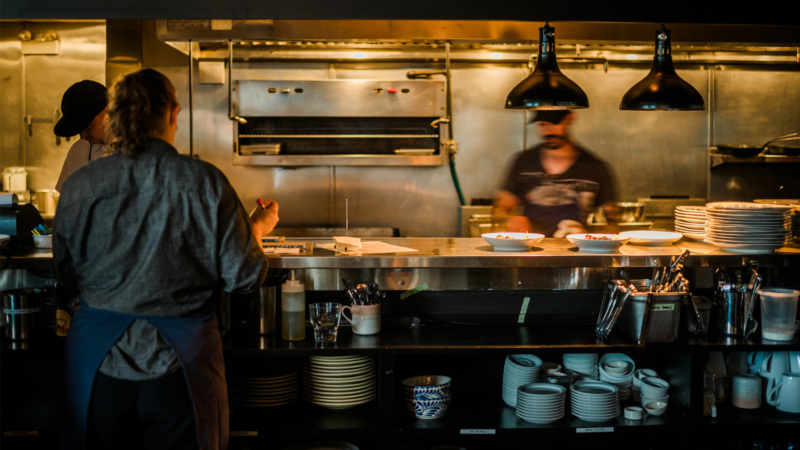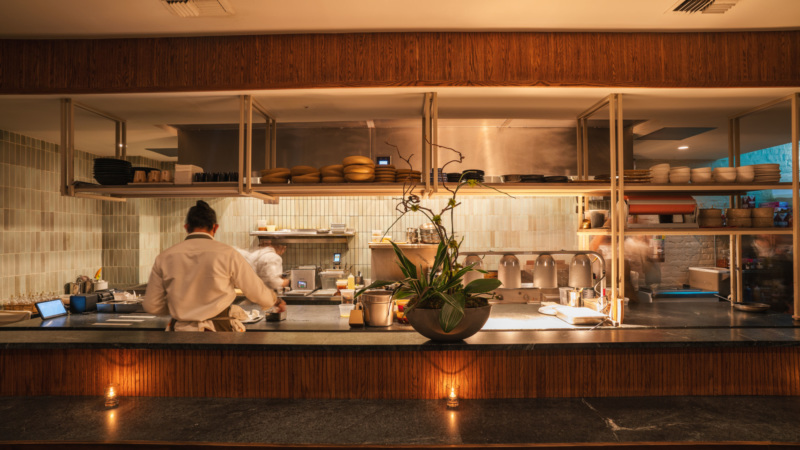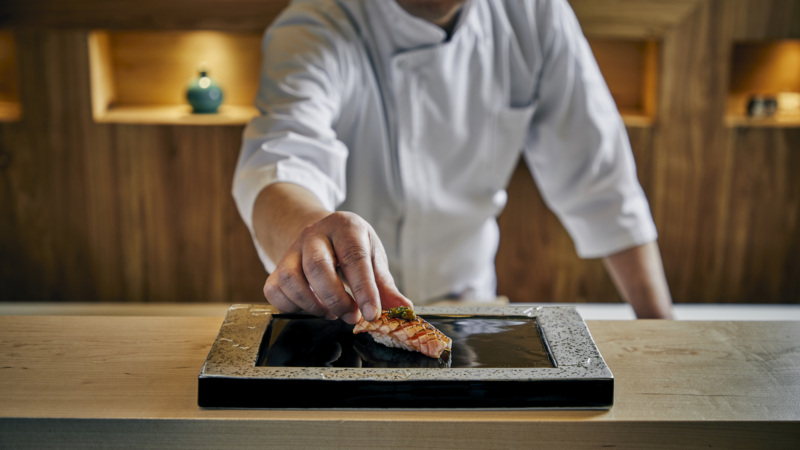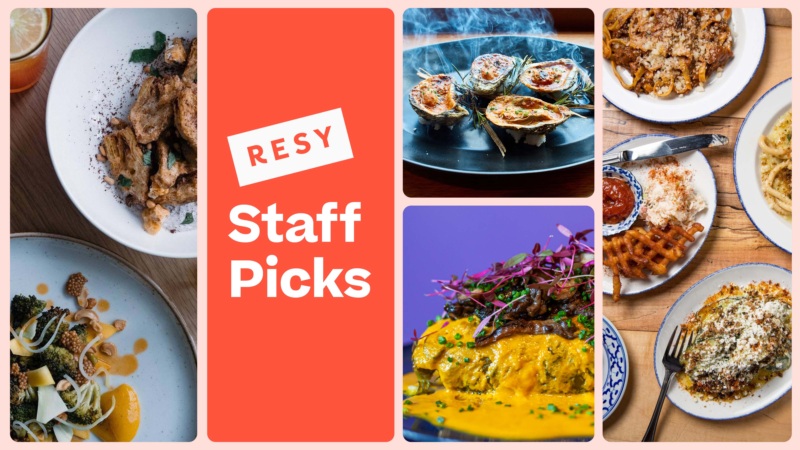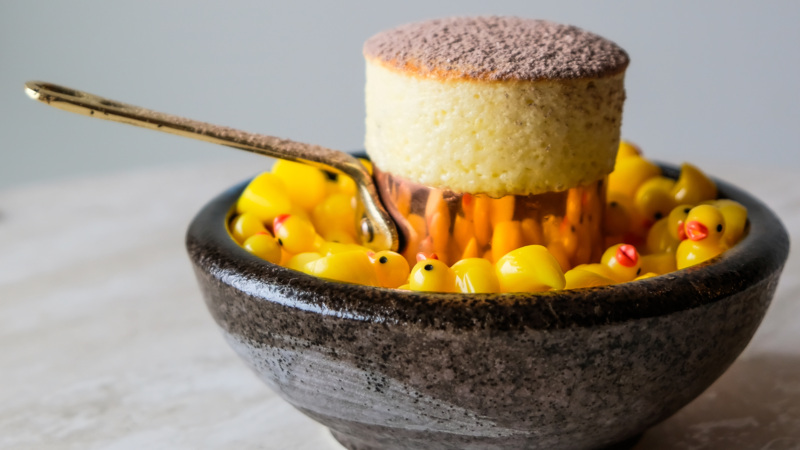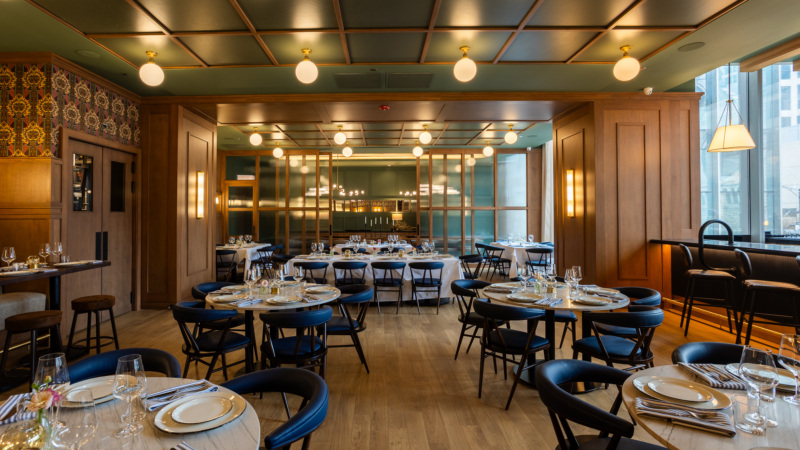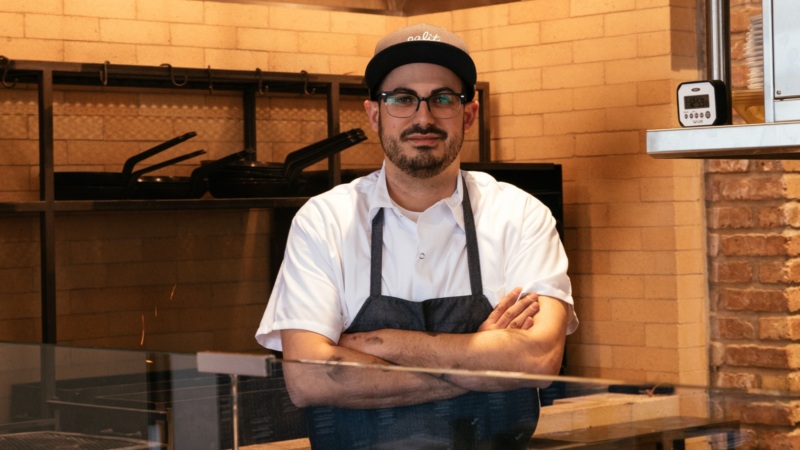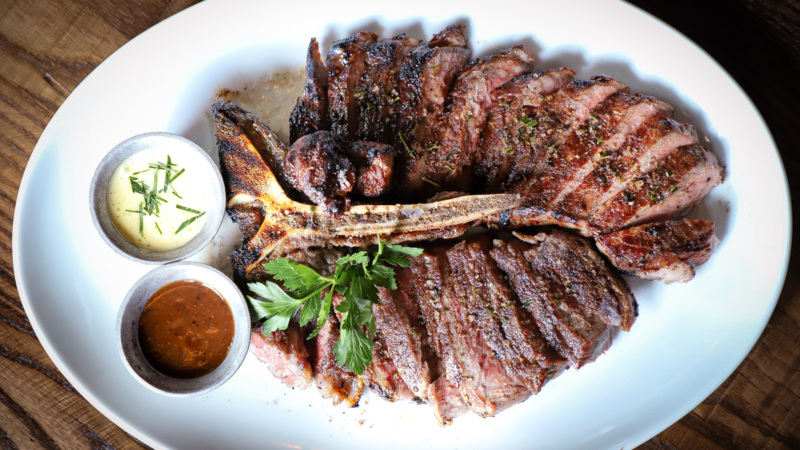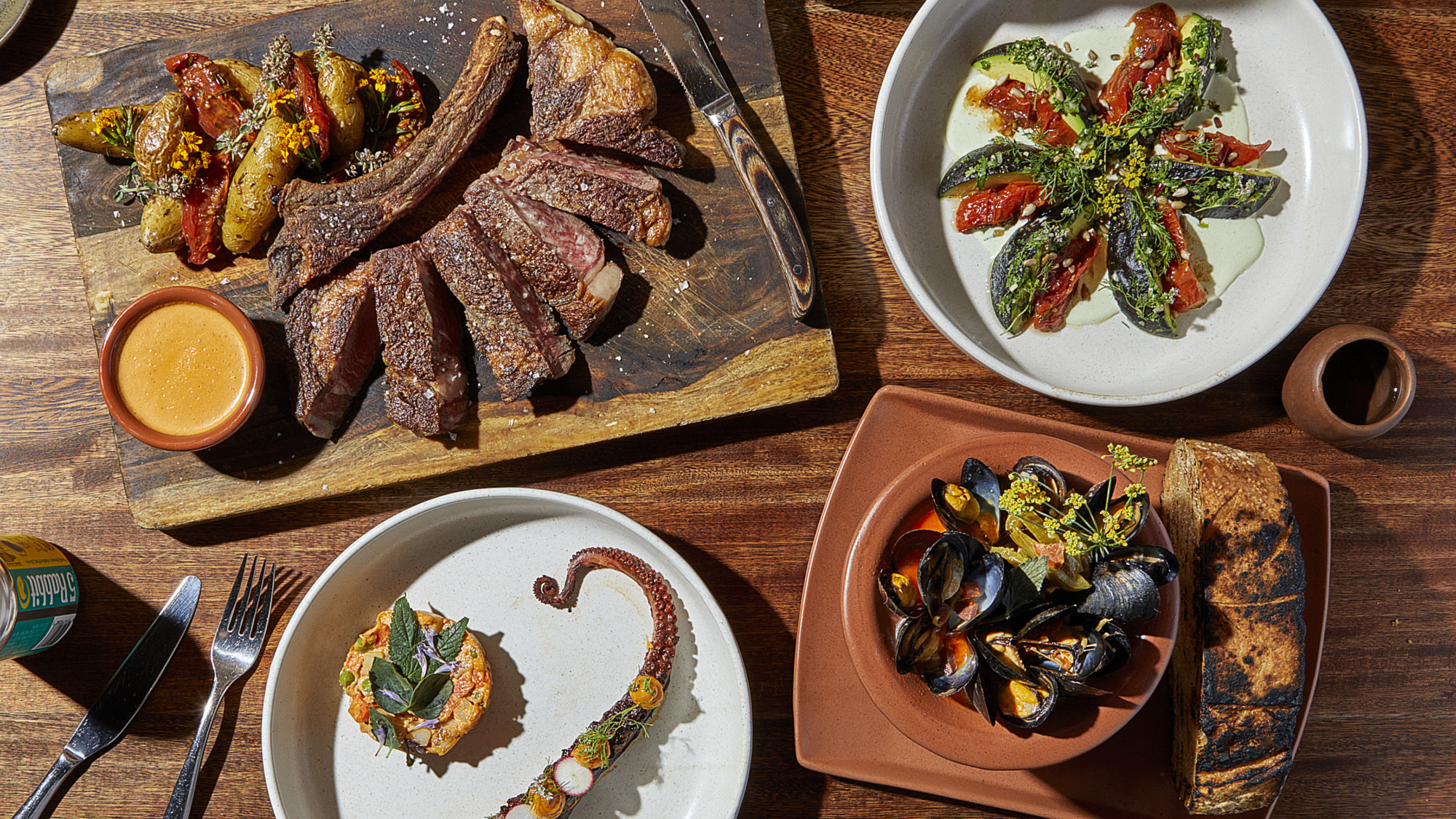
The Five Dishes You Must Order at Carlos Gaytan’s Tzuco
When Carlos Gaytan visited his family in Huitzuco, a small town in Guerrero, Mexico, he told his mother one day that he wanted to cook for the family. He planned on making cochinita pibil, a traditional Yucatan dish that she has prepared for decades.
Gaytan, an internationally renowned chef, felt confident in his ability to recreate the dish from memory, perhaps with a few small tweaks informed by his years of experience. He was looking forward to the usual “oohs” and “aahs” that his food inspired. But when he set the completed dish on the table, he was met with silence. “I had to ask my mom, ‘how was it?’” Gaytan recalls. “She turned around and said to me, ‘My dear son, I will cook you my cochinita pibil tomorrow.’”
That dish — cooked according to his mother’s specifications and bearing her stamp of approval — is served today at Gaytan’s Gold Coast modern Mexican restaurant, Tzuco, named after his hometown. Open since 2019, Tzuco tells the story of Gaytan’s life, from a young boy hunting with his father and learning to cook with wild ingredients, to his French training and time as chef de cuisine at Bistrot Margot.
The menu features Gaytan’s signature Mexican-French cooking, which helped the “Top Chef” alum become the first Mexican chef to win a Michelin star. Each dish is deeply personal and showcases what Mexican cuisine can be, he says. “Tzuco is the soul of my hometown. I hope people will sit down and enjoy an amazing experience through the cuisine.”
Here are five dishes to guide you through a first visit, and the stories behind them.
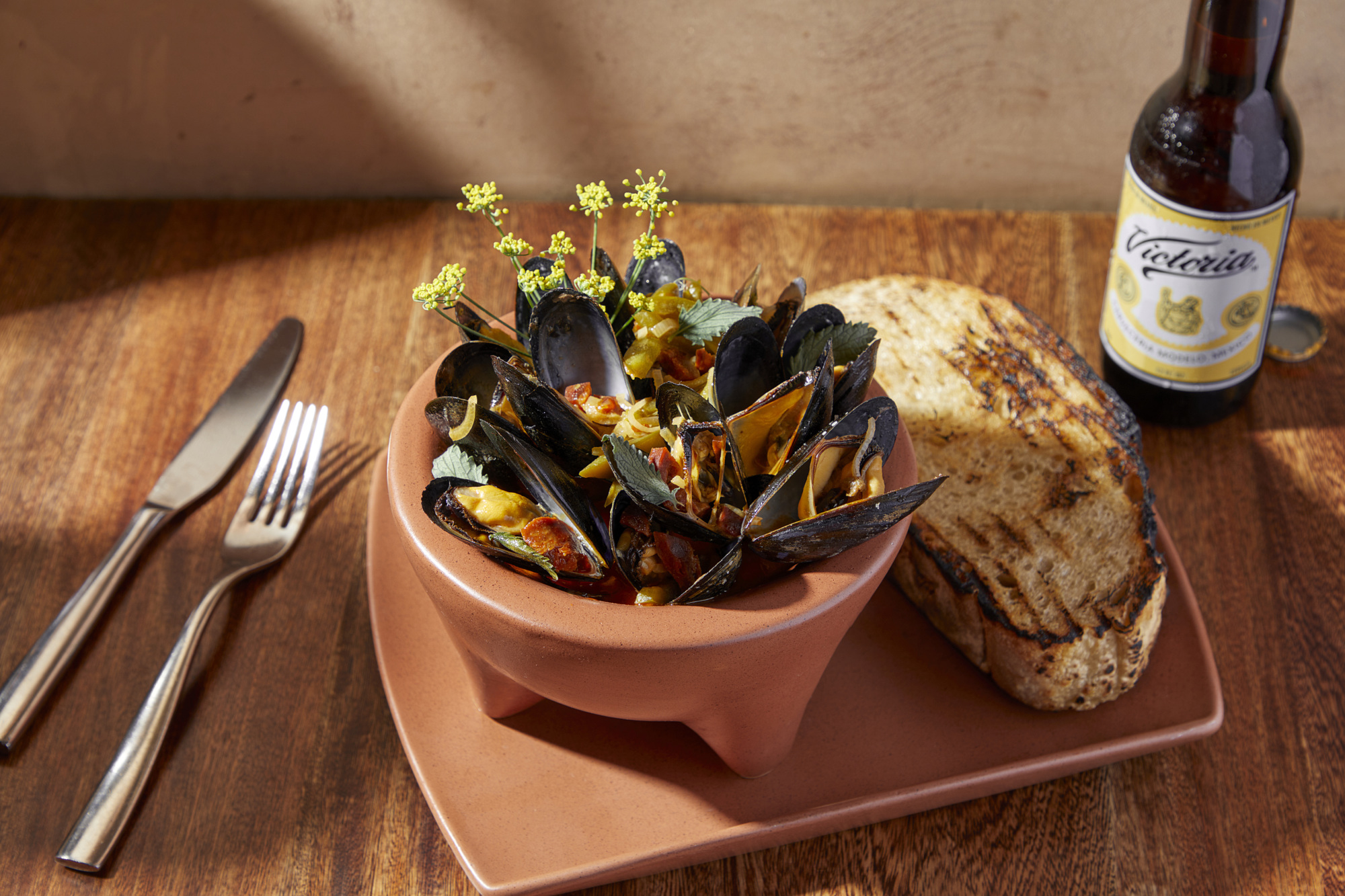
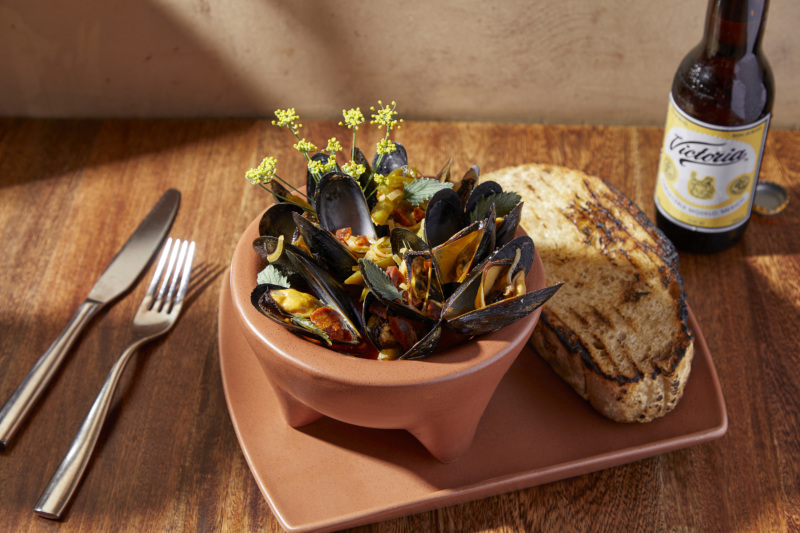
Mejillones
When Gaytan was a chef at Bistrot Margot, he made countless bowls of moules frites, mussels cooked in a white wine and herb beurre blanc, served with fries. “It was good, but I always thought it was missing something. It felt kind of boring, so I started incorporating saffron in the beurre blanc, and added dried chorizo and pickled jalapeno, and then it was amazing,” Gaytan says. “I was like ‘Wow, this is something that should be on my menu whenever I open my restaurant.’”
Served with housemade sourdough bread, Gaytan’s mejillones come in a large portion meant to be shared. “I can see everything from my kitchen, and I get to look at people when they try the first bite,” he says. “I love when people take a piece of bread and dip it into the sauce. They start with a small bite, but by the end, they ask for more bread to finish everything. There’s nothing better than that.”
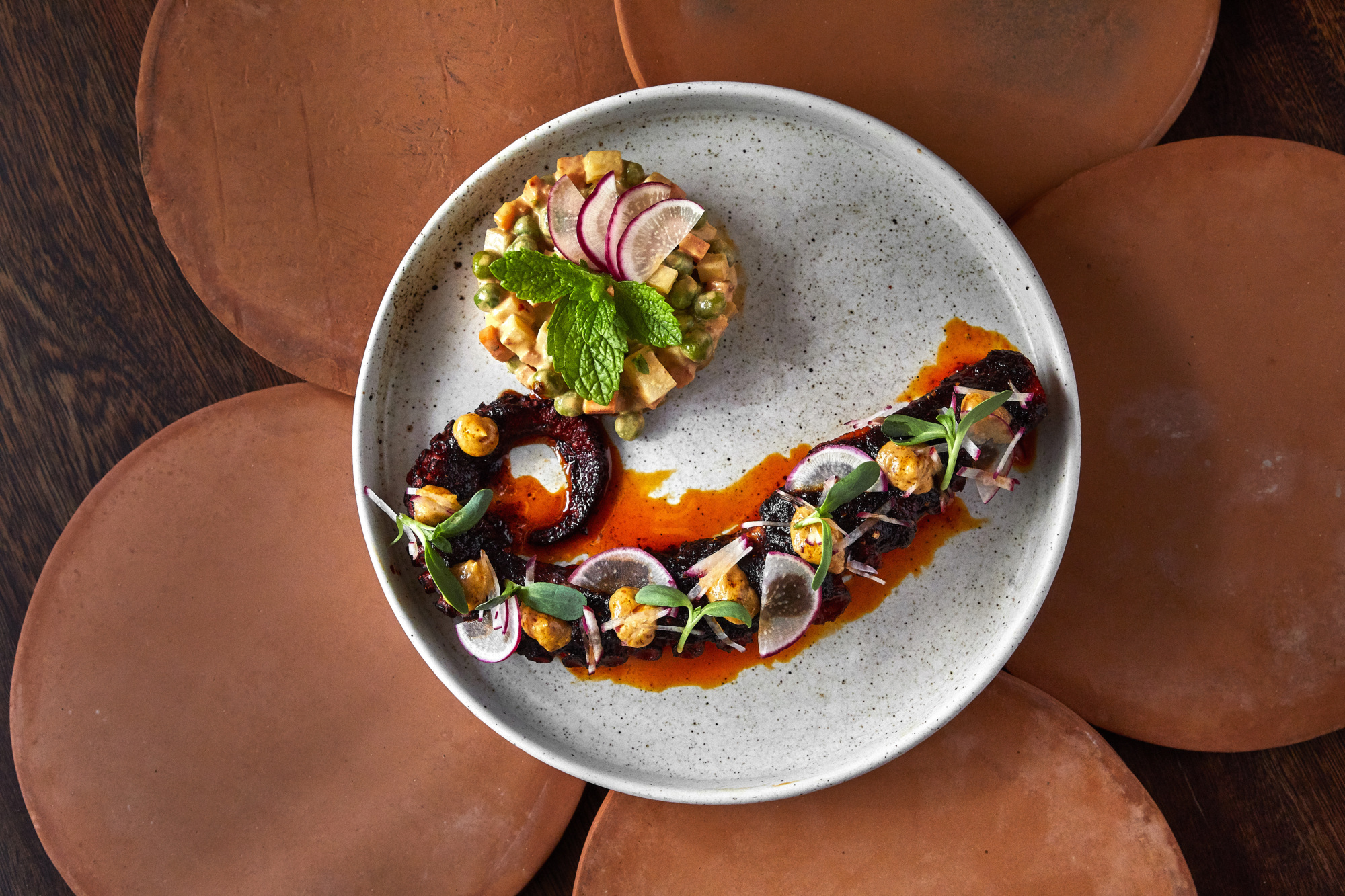
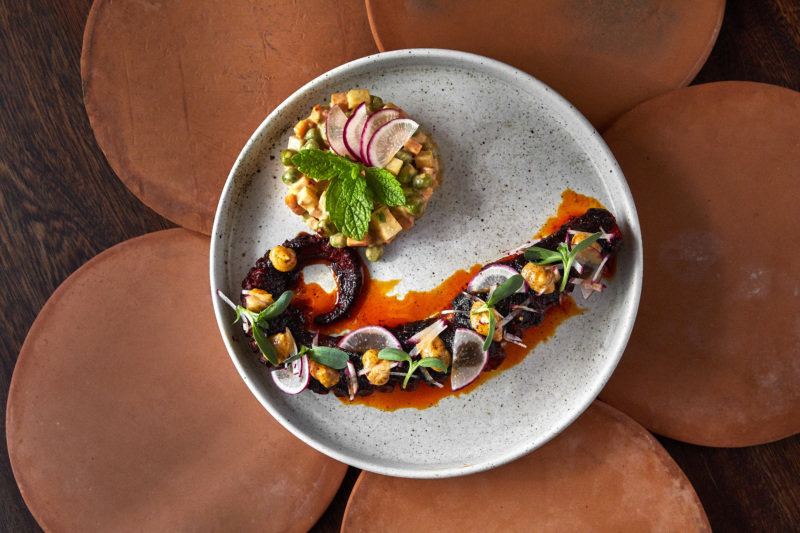
Pulpo Enamorado
“When I was younger, my mom used to take us on field trips. She made this tuna salad with pickled vegetables and mayonnaise and it was so good,” Gaytan says. “So I did my own version of that.”
Gaytan’s rendition replaces mayo with a tonnato aioli, made with confit tuna filets, and combines it with salsa macha, a dried chile salsa that Gaytan makes with guajillo, ancho, and arbol chiles, plus ground sesame seeds, garlic, and ginger with a touch of lime. This mixture holds together the pickled carrots, peas, and potatoes.
Curled around the salad is a two-pound piece of octopus, so meticulously cooked that Gaytan describes its preparation as a ritual. It’s dipped in ice water for four seconds before being dunked in boiling water, a process that’s repeated four times before it’s finally simmered with onions, garlic, and carrots for over an hour. The octopus is then chilled and marinated with guajillo chiles, garlic, pepper, and cumin before getting finished in the wood oven.
“People who like octopus tell me this is the best octopus they’ve ever had,” says Gaytan. “People who hate octopus end up loving it.”
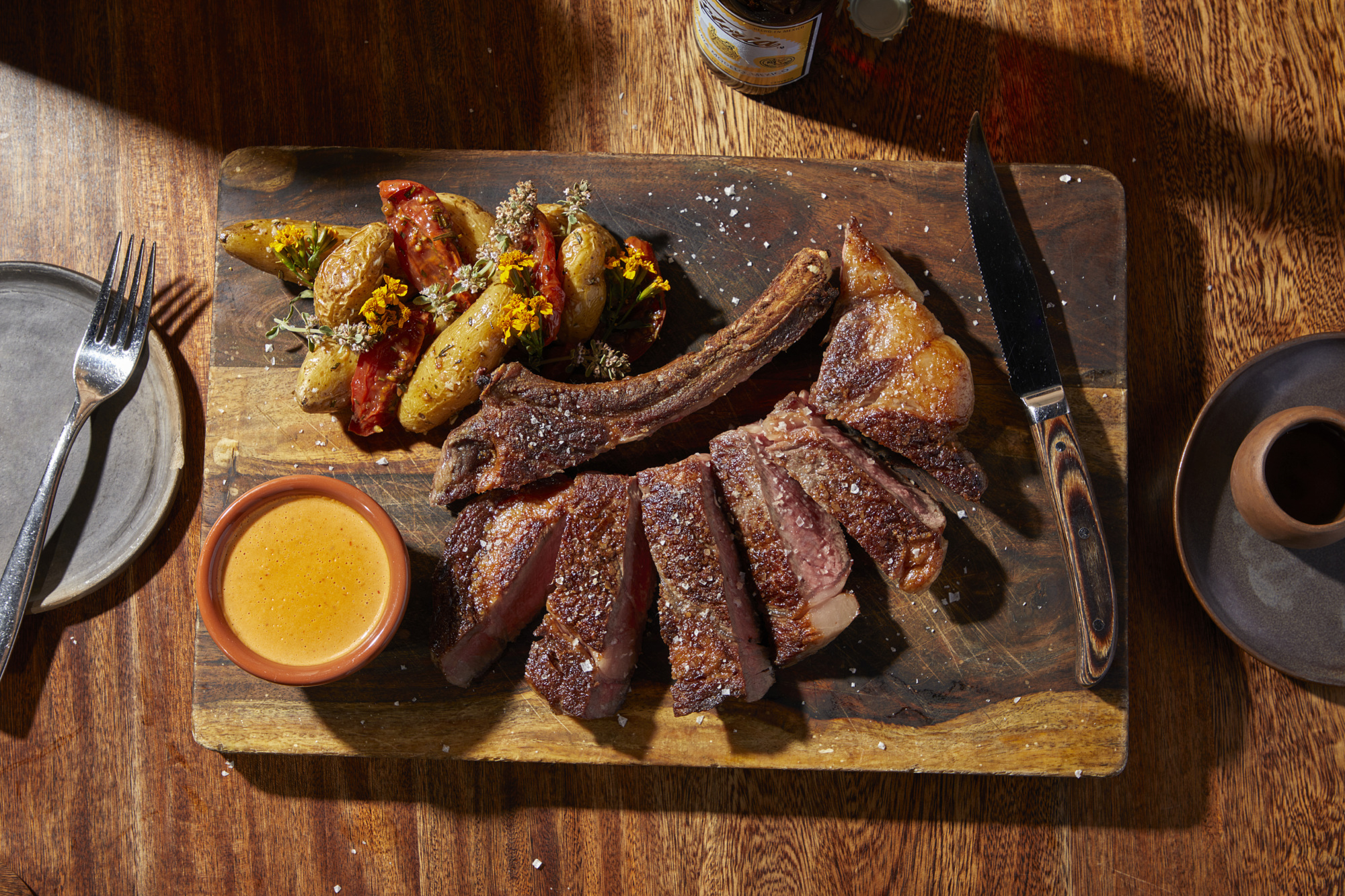
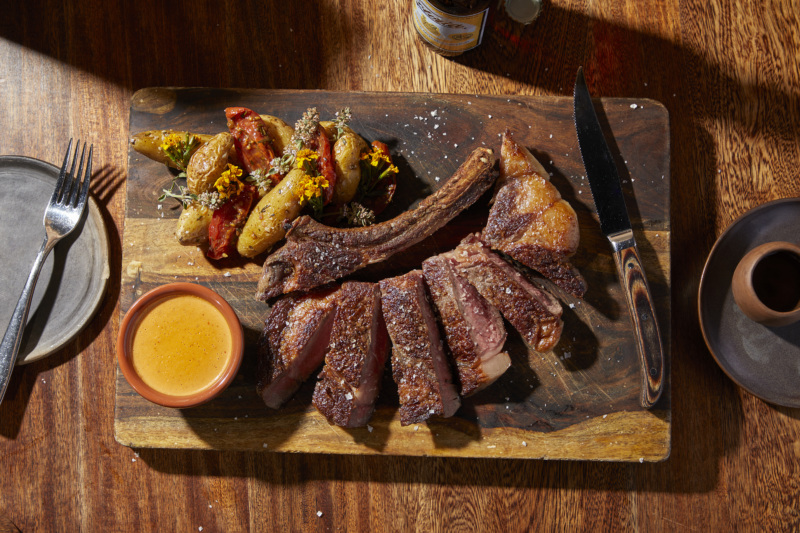
Carne Asada
“If I know I’m going to die, this is what I’m going to eat for my last meal,” Gaytan says with a chuckle. While you can choose between a dry-aged rib eye from Snake River Farms or an Angus New York strip, Gaytan recommends the former, which is made specifically for Tzuco and aged for 32 days. Ideally served medium rare, the carne asada is seared and finished in the wood oven. This hearty dish also features a creamy, spicy chipotle goat cheese fondue akin to French cream sauces, as well as juicy slow-roasted tomatoes covered with balsamic, thyme, and garlic, and herb-roasted fingerling potatoes to help mop up all of the sauce.
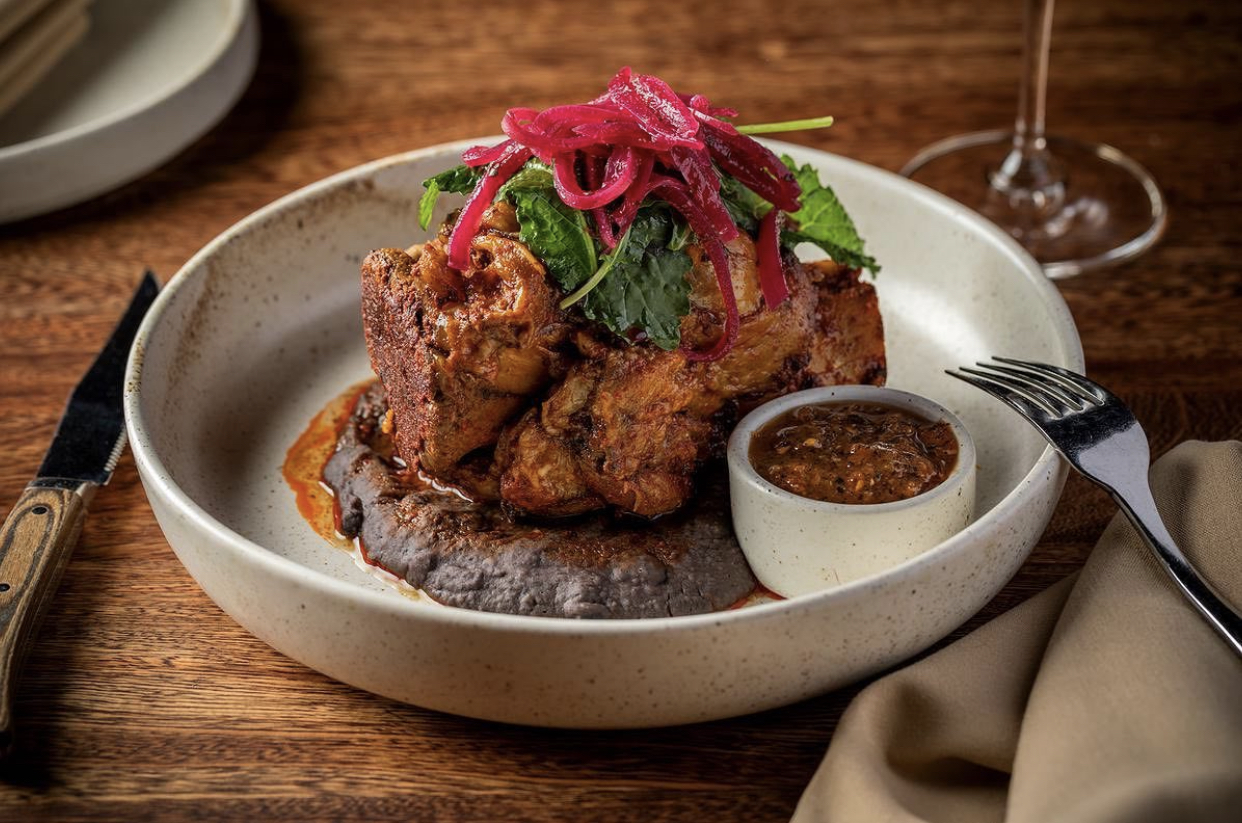
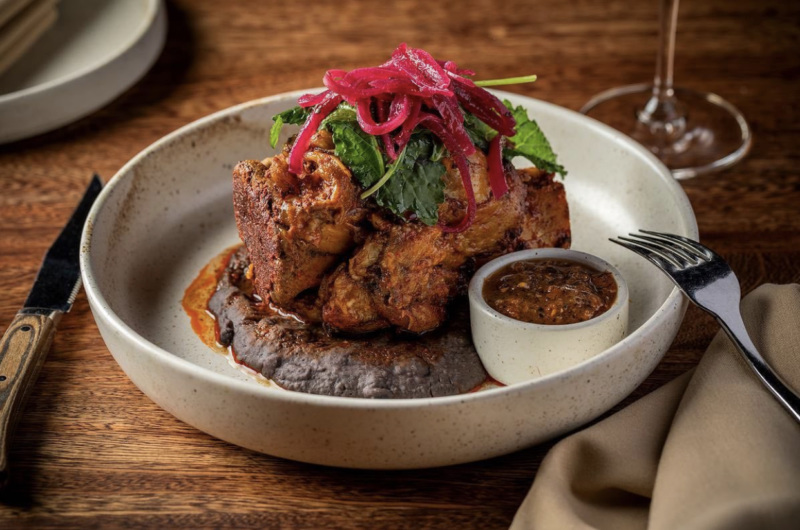
Cochinita Pibil
For this signature dish, pork shank is marinated in pineapple vinegar, cinnamon, guajillo peppers, cumin, avocado leaves, almonds, garlic, and oregano, then wrapped in banana leaves and cooked for four hours before arriving at your table. Nestled atop black beans infused with more of the floral avocado leaves, the pibil is served with homemade habanero tatemada chile sauce and pickled red onions. Gaytan recommends adding warm tortillas so you can make your own tacos.
“My mother is still teaching me things and I had to ask her for permission [to put the pibil on the menu],” Gaytan says. “The one condition she gave was for me to bring her over to try it. So obviously I bought her a ticket, she came to visit Chicago, and she gave her approval.”
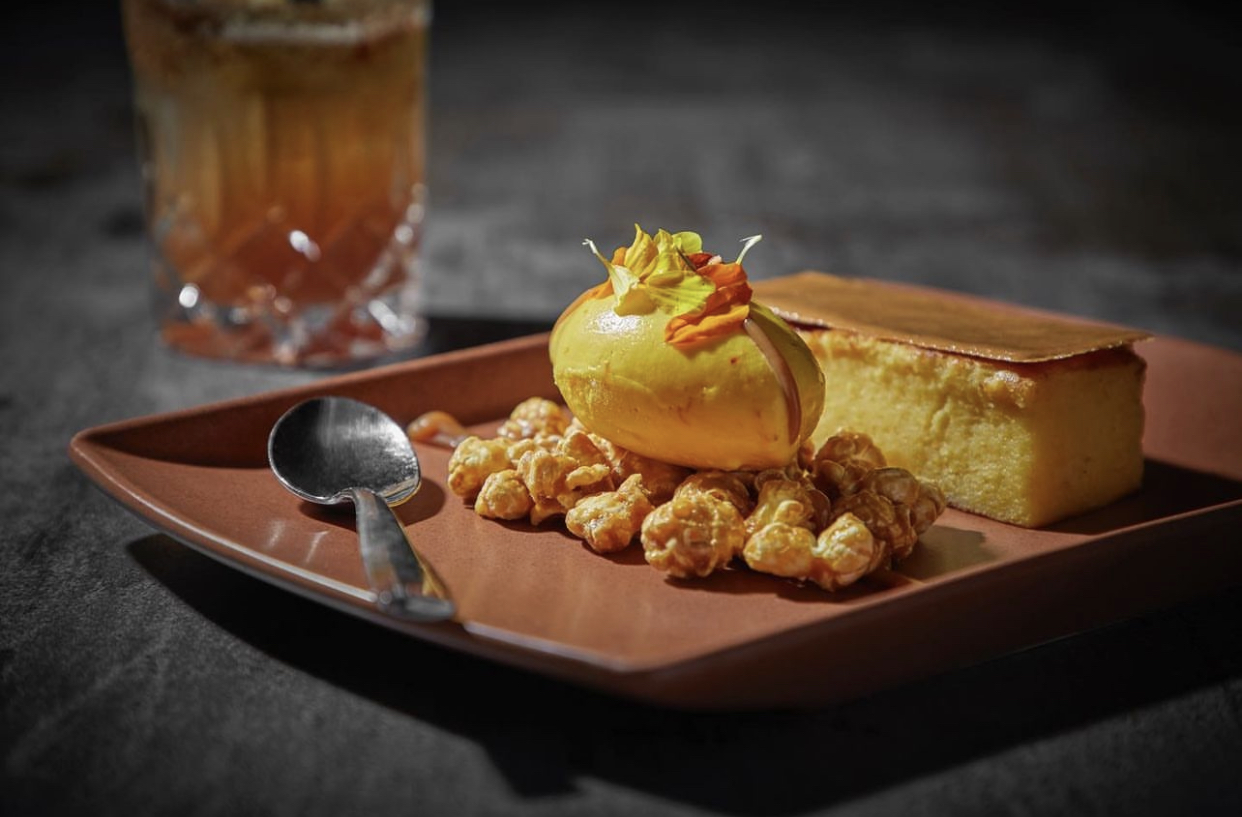

Maiz y Azafran
Although Gaytan takes special pride in his seasonal desserts shaped like peaches, pumpkins, lemons, and snowmen, his warm corn cake is available for all occasions. It’s a variation of a traditional Mexican dessert called panqué de elote, or corn sponge cake, made with fresh corn that lends a subtle sweetness to the dish.
Three flavors stand out in this dish: corn, saffron, and cajeta, a Mexican caramel made with goat milk. Many Mexican children have fond memories of Tomy, a cajeta-flavored hard caramel candy. A thin disk of this nostalgic treats crowns Gaytan’s warm corn cake, alongside a generous scoop of saffron ice cream and a pile of cajeta-coated popcorn drizzled with smoked dulce de leche. The temperature difference, says Gaytan, is key to the dish’s success. “The softness in the cornbread, crunch in the toffee and the popcorn, and smoothness of the ice cream — I always tell our guests to try to get a little bit of it all for the perfect bite.”
Grace Wong is an award-winning journalist covering food and travel. Since working at the Chicago Tribune, she has freelanced for publications like Better.net, The Philadelphia Inquirer, Block Club Chicago, and Resy. You can follow her at @GraceWong630 or gracewong630.com. While you’re at it, follow Resy, too.










